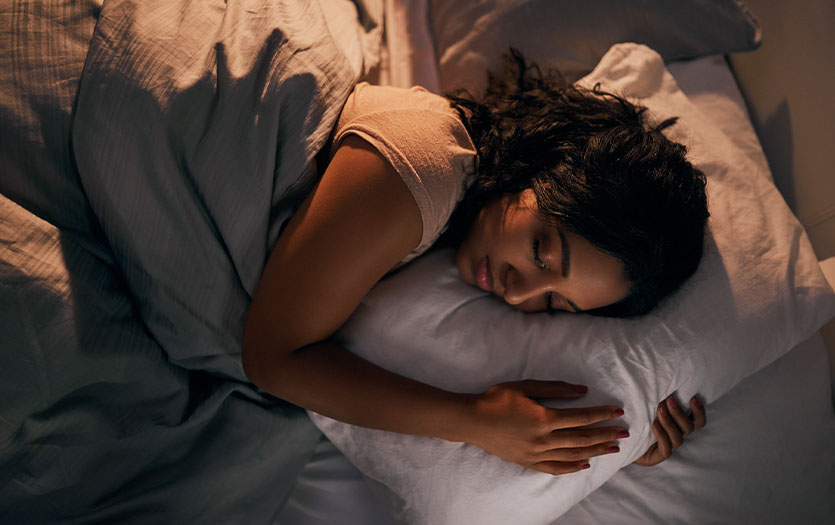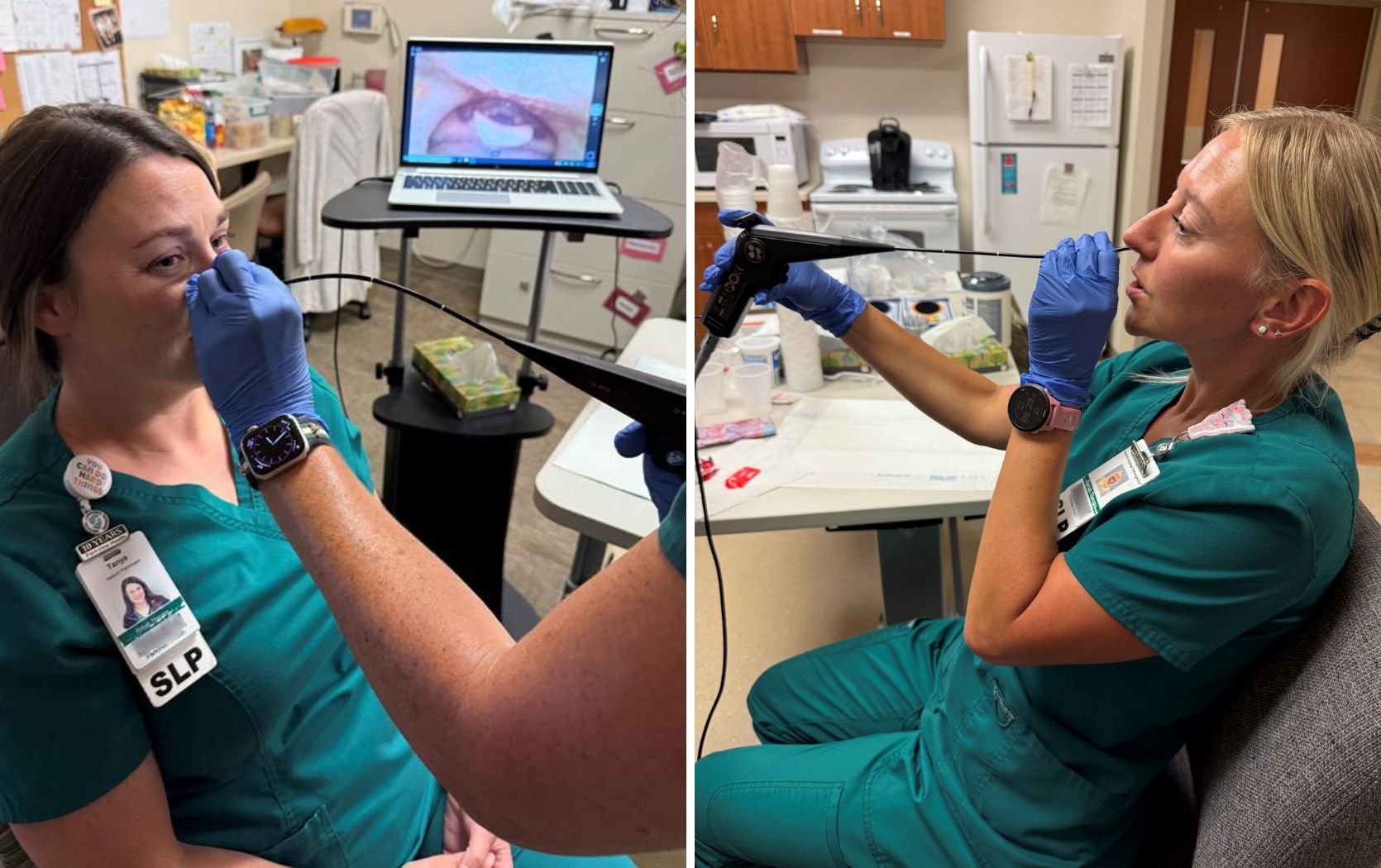
This post was written by Srinivasan Devanathan, MD, PPG – Sleep Medicine.
This is a broad topic, but in general, women tend to report a poor sleep quality and have a higher risk for insomnia compared to men. The National Sleep Foundation has many articles on the subject, but the main factors that contribute to these sleep setbacks include:
- Variation in reproductive hormones tied to the menstrual cycle, menopause and/or pregnancy
- Stress linked to mood disorders like anxiety and depression
- Natural process of aging
- Life role transitions
- Additional responsibilities and the struggle to balance work and home life
These main points make women more likely to be in a sleep deficit and experience carryover effects connected to a lack of adequate sleep. We will explore some of these in greater depth below.
Hormones and sleep – The menstrual cycle
The key hormones women produce that play a role in sleep include:
- Estrogen
- Testosterone
- Progesterone
- Follicle-stimulating hormone (FSH)
- Luteinizing hormone (LH) or DFAB
- Prolactin (PRL) or lactotropin
- Growth hormone
In addition to playing key roles in the reproductive and menstrual processes and regulation, these hormones also influence our Circadian rhythm and sleep architecture.
During times of hormonal change, such as during a women’s premenstrual and menstrual period, perimenopause or menopause, women report poor sleep and greater sleep disturbance. Particularly toward the end of the premenstrual cycle, when hormone levels are very low, women report symptoms such as fatigue, sleepiness, fragmented sleep and difficulty concentrating.
Additionally, some women experience premenstrual dysphoric disorder (PMDD), which contributes to more severe symptoms tied to the menstrual cycle, including enhanced emotional and mental distress and poor sleep quality that presents as frequent awakenings or insomnia.
All these symptoms lead to non-restorative sleep, which means that, even if the woman is able to get some sleep, she might have vivid dreams, nightmares, poor sleep quality and wake up feeling unrested. Then their daytime function is impaired. They might display decreased alertness, fatigue, an inability to concentrate and overall mood challenges.
If you are experiencing any of these issues during your menstrual cycle, I recommend speaking to your primary care provider or gynecologist to explore options for managing symptoms. Some patients find success through medication used to manage mood-specific symptoms, but this approach would not address the insomnia directly.
When a patient is experiencing disrupted or poor-quality sleep tied to the menstrual cycle, we generally recommend a process called cognitive behavioral therapy for insomnia (CBT-I).
Hormones and sleep – Menopause
Patients experiencing poor sleep correlated to perimenopause or menopause, often report symptoms such as hot flashes and night sweats. Unfortunately, insomnia tends to peak in this age group. As high as 65% of women report disordered sleeping during perimenopause and menopause, according to the National Institutes of Health.
Women in this group should speak to their care team about the possibility of medication, including hormone replacement therapy (HRT), and the potential benefits and risks, and make the best decision for them.
You could also speak to your primary care provider about the potential of a referral to Sleep Medicine to explore prescription medication or other approaches, such as CBT-I to address the insomnia specifically.
Some explore therapeutic options, such as yoga, meditation, mindfulness and acupuncture. If you find these methods helpful, they are great, low-risk options to explore for improved sleep.
Pregnancy and sleep
We know that sleep disturbances are common throughout pregnancy and tend to worsen as the pregnancy advances, due to growing physical discomfort and anticipation.
From a physical standpoint, women who are expecting often experience uncomfortable symptoms, often nocturnal, including:
- Hot flashes
- Night sweats
- Increased trips to the bathroom
- Vivid dreams
- Nausea
- Backache
- Heartburn
- Fetal movement
- Restless legs
- Leg cramps
- Abdominal discomfort
- Breast tenderness
From a mood perspective, mothers-to-be often wrestle with heightened:
- Anxiety
- Anticipation
- Worry
- Urges to nest
These sensations and mental health aspects can lead to poor sleep that contributes to daytime fatigue and drowsiness, which then fuels the emotional stress of pregnancy. Insomnia is most common in the third trimester. By this point, sleep efficiency is much lower and total sleep time decreases, which correlates to lower amounts of REM sleep.
.jpeg)
Because of the sensitivities and considerations linked to pregnancy, there isn’t enough research on methods to address insomnia in pregnant women. The best recommendation is for expecting mothers to take their prenatal vitamins and consult with the care team regarding other symptoms.
During the postpartum phase, after baby arrives, a new set of sleep disrupters arrives. In addition to the general changes in routine and demand, mothers experience a drop in hormone levels and broken sleep in response to the newborn’s sleep pattern. New parents tend to sleep with “one eye open,” to look over their precious arrival, which can make it very difficult to get quality rest.
In response to daytime sleepiness, some new parents try to drink more caffeine to combat their feelings of tiredness. This can impact their ability to sleep when it’s time to go to bed. Similar to pregnancy, it’s difficult to recommend specific medications to address insomnia during this postpartum period, as there isn’t enough research regarding how some of these methods might impact infants who are breastfeeding. In response to extreme insomnia, some women may benefit from CBT-I during this period.
Women and sleep disorders
The term sleep disorders is a collective term, encompassing breathing disorders, restless leg syndrome parasomnias and abnormal behaviors during sleep. While women certainly can be and are diagnosed with sleep apnea, we do see these breathing-related diagnoses more commonly in men and insomnia more in females. Among the general population, approximately 15% of women report sleep disturbances/insomnia.
With women, they might have sleep apnea, but they often underreport symptoms of snoring or interrupted breathing, because they aren’t aware or they are more impacted by the effects of chronic sleep maintenance insomnia. So, it comes down to presentation.
A unique consideration for female patients worth mentioning is that they metabolize medications prescribed for common sleep disorders differently than male patients. Roughly a decade ago, the Food and Drug Administration (FDA) began recommending lower doses of the popular medication Ambien® after the discovery that higher doses increased the risk for daytime impairment in women, as they metabolize the medicine differently.
A surprising data point
Interestingly, when we review the objective measures of sleep captured in a sleep study, done in a lab or at home, in patients 55 and younger, we see a much shorter sleep onset latency in female patients compared to male. This trend also holds true for sleep efficiency. So, in theory, the data is telling us that women can fall asleep faster and get more total sleep time.
Managing sleep
This begs the question, could some of the therapies mentioned above, paired with improved sleep hygiene lead to better rest for the female population?
When I meet with a patient to assess their sleep challenges, I ask a lot of questions. Among them, I try to familiarize myself with their nightly routine. I might ask:
- What do you do most days?
- Do you read in bed?
- When do you have your last cup of coffee?
- Do you watch television in bed?
- Do you do work in bed?
- Do you have animals jumping in and out of bed?
- Are your children coming into your room?
- Does your partner snore or have a sleep disorder?
- And so on …
All these things, and so many more, play into your ability to fall and stay asleep throughout the night. You can find some general sleep hygiene tips here.
Other things you can try to address insomnia include:
Weighted blanket – First used to help young people with autism, weight blankets have gained some support for helping with sleep and restlessness. The drawback here is that the extra weight can be problematic for women experiencing temperature-related symptoms, like night sweats. If this is the case for you, find a weighted blanket in a lighter material, such as bamboo, and only place it over your body from the waist, down. Don’t go too heavy! About 8-10% of your bodyweight is a good gauge for this product.
White noise – Bedrooms should be quiet, generally speaking, but many people benefit from white noise. This could come from a fan or a machine. There are apps available as well, but be careful about keeping technology close to your bed.
Keep a consistent wake/sleep schedule – Make sleep a priority and aim for the same bedtime and wake time each day.
Avoid excessive caffeine – People who suffer from insomnia often try to override the symptoms of sleep deprivation by consuming large amounts of caffeine. Try to limit your consumption of these beverages, and avoid drinking caffeine about eight hours before you plan to go to sleep. Alcohol, similarly, can be a sleep disrupter, so be mindful of drinking before bed.
Work on relaxation techniques – From meditation to reading, there are so many wonderful relaxation rituals to try.
Check in with yourself – Set aside time, dedicated to yourself, to journal, pray or reflect. Using this space to get all of the thoughts that might be weighing on you can be helpful in reducing anxiety, clearing frantic thoughts and helping you settle down for sleep.
Lose the clock – If possible, take the clock out of your bedroom. Bright, digital clocks in particular can disrupt sleep because of the light exposure and anxiety that comes from seeing the time if you wake or struggle to fall asleep.
Invest in your bed – From the mattress to your pillows to your bedding, invest in creating a comfortable, soothing sleep environment. It’s worth it!
Don’t ride it out – If you wake up and struggle to fall back asleep, it isn’t always best to wait it out. Don’t stare at the clock, spiraling about the reasons you can’t fall asleep, what you have to do in the morning, the day ahead, etc. Give it 15 to 20 minutes and, if you don’t fall asleep, get up, leave the room, and do something boring until you feel tired. This is known as stimulus control and can be a helpful tool for return to sleep.
When in doubt, reach out – If you are consistently or frequently experiencing disrupted or troubled sleep, don’t hesitate to speak to your primary care provider about possible treatment options or a referral to Sleep Medicine for further evaluation. Sleep is a powerful component of our overall health and, while there are gender differences, there are options for most circumstances. You deserve your rest!
You can find additional resources and simple tips to promote restful sleep by visiting this page on parkview.com.



